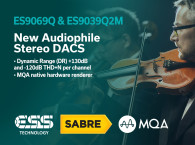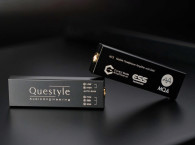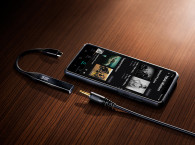
MQA’s technology is quickly gaining support from artists and music enthusiasts due to fact that master MQA files are fully authenticated and small enough to stream, while also being backward compatible, so users can play MQA music on any device. The technology is being licensed by labels, music services and hardware manufacturers worldwide and is certified by the RIAA.
The MQA encoding process cleverly folds the extra information from high resolution digital masters into the signal that can be recovered later. The resulting signal sounds great on its own and improves with systems that unfold the extra data and take advantage of the full range and dynamics of the master file created in the studio.
This “unfolding” process takes place in two steps: the first unfold, called Core Decoding, can be done on most DSP systems, and system designers looking to implement this can take advantage of standard code. In fact, this process is already included in many existing software music applications such as Tidal, Roon, Amarra and Audirvana. Core Decoding is also available in dedicated portable devices such as Onkyo and Pioneer players as well as several smartphones.
The final step in the unfolding, called rendering, needs to be done in tight cooperation with the DAC. The quality of the rendering depends on the DAC output filters and this has typically involved hand tuning each design. But the agreement between ESS and MQA will make the whole implementation a lot easier.
ESS Technology will soon introduce SABRE Mobile DACs and Headphone Systems with integrated MQA rendering. Integrating the renderer as a hardware block coupled to the DAC achieves several advantages including ease-of-design, improved performance, and lower power.
At the heart of this solution is the legendary SABRE digital to analog converter, which provides amazing sound quality with a stable image. The HyperStream II modulator and QUAD DAC Technology allow users to hear every nuanced detail. As ESS explains, "the SABRE brand is widely recognized as providing the best sounding DACs on the market and is the choice of leading audiophile brands. Combining the MQA rendering with the DAC will eliminate all the manual tuning and software integration that is required when using a separate DSP and stand-alone DACs. The system designer won’t need to worry about the implementation at all. Automatic rendering will allow the system to instantly detect a Core MQA stream and configure the custom filter settings to give the optimal-quality output. The combined hardware blocks allow for the solution to be implemented without a DSP, saving power as well as size and cost."
These small and lower power solutions will be ideal for active headphones that can offer MQA whenever a software decoder is active on the device. They also offer compelling value to table-top or portable players that want to offer great sounding DACs with a full MQA solution.
For more than three decades, ESS Technology has been on the cutting edge of audio technology. A privately-held fabless semiconductor company, ESS Technology designs and markets high-performance analog and HiFi audio devices for mobile, consumer, automotive, and professional audio systems.
www.esstech.com | www.mqa.co.uk






